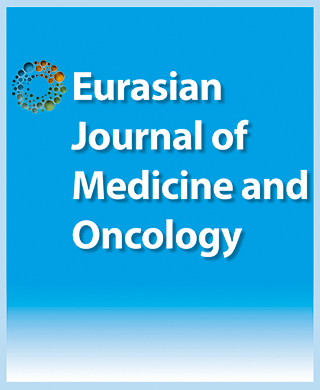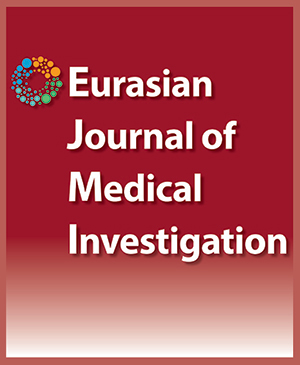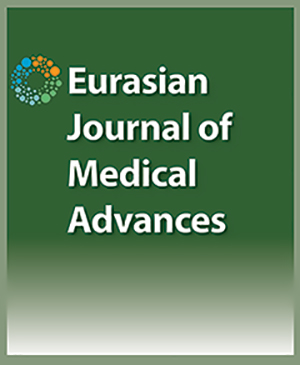

Preoperative Evaluation: Could age be the Only Risk Factor Toward Requiring Further Diagnostic Investigations?
Antonio Coviello1, Danilo Esposito1, Roberta Galletta1, Marilena Ianniello1, Alfredo Maresca1, Giuseppe Servillo11Department of Anesthesiology and Intensive Care Medicine, Policlinico - Federico II University Hospital - Naples, Italy,
LETTERS TO THE EDITORS Preoperative evaluation: could age be the only risk factor that requires further diagnostic investigations? Preoperative anesthesiological visit is essential for evaluating whether the patient is a surgical candidate in order to obtain as much information as possible on his/her health condition that can allow to assign a risk score and to tailor the anesthesiological management. With regard to this topic, we believe it is interesting to present the case of a patient undergone major orthopedic surgery that got complicated because of his severe aortic pathology, unknown and not highlighted even if a careful preoperative anesthesiological examination was performed. An 82-year old male patient arrived at the orthopedic operating block for replacement of an infected left knee prosthesis. In anamnesis, he reported arterial hypertension in well-controlled treatment. He reported moderate physical activity tolerance (METS 5-7), BMI 27.68 kg/m2 and previous subarachnoid anesthesia for uncomplicated TKR (Total Knee Replacement) implantation at the preoperative anesthetic examination. The preoperative ECG at rest showed nonspecific anomalies of repolarization probably linked to chronic arterial hypertension. Preoperative blood chemistry and chest X-ray were normal. Therefore, the patient was classified with ASA score 2. No further cardiological study was required according to ESC 2019 guidelines - Revised Cardiac Risk Index1 (RCRI - low risk of perioperative cardiac complications); APACHE II score 5-9 points (3% estimated postoperative mortality, 8% estimated nonoperative mortality); POSSUM score (3.0% predicted mortality, 16.7% predicted morbidity); SORT score (Risk 0.45%). Neuraxial technique was chosen due to his clinical picture. The patient was carried to the operating room, later he was administered intravenous premedication with 0.03mg/kg of midazolam and 4mg of dexamethasone. Subarachnoid anesthesia was practiced at the L2-L3 level by puncture with a Whitacre 25G needle; 12mg of 0.5% hyperbaric bupivacaine and 8? of sufentanil (total volume 3ml) were injected. Block obtained T12-S4. Stable hemodynamics (B.P. 130/80 mmHg, H.R. 70 bpm and SpO2 99%). During the surgery, the patient was spontaneously breathing with 40% FiO2 in Venturi mask. A hypotension event occurred forty-five min after anesthesia (B.P. 90/60mmHg), therefore the crystalloid infusion rate was increased. Despite this, hypotension made worse (B.P. 60/30 mmHg) with impalpable carotid pulse and a reflex bradycardia (H.R. 30 bpm) was revealed; the patient was then treated with Ephedrine 25 mg and because of persistence of bradycardia, which was associated with brief loss of consciousness with desaturation (SpO2 70%), he was treated with Atropine 1mg and assisted with ventilation in face mask. In a few minutes the patient regained consciousness, sinus rhythm, adequate levels of saturation and blood pressure (SpO2 100% and BP 120/80mmHg). The total duration of surgery was about 3h, a continuous saphenous nerve block in the adductor canal was carried out at the end of the surgical intervention for the management of post-operative pain. Later the patient was transferred to ICU for intensive monitoring and for diagnostic investigations about intraoperative hemodynamic changes. An echocardiography was performed in ICU which showed severe aortic calcific stenosis. In light of this, subarachnoid anesthesia would have been contraindicated for this patient 2 and that was not evident from the clinical picture and from the instrumental findings available to us at the time of the anesthesiological visit. There is therefore the doubt that some patients may not be optimally framed by the guidelines and by the most used preoperative evaluation scores – that may arise unexpected intra and post-operative complications. May over 75-year subjects be part of this kind of patients? Considering that major surgery is related to a higher incidence of cardiovascular complications and death from cardiac causes 3- and that elderly patients undergo surgery four times more frequently than younger patients 3, 4 - would it therefore be appropriate to undergo elderly patients to diagnostic investigations of heart risk, even with an apparent good hemodynamic compensation, only considering age as a risk factor?
Cite This Article
Coviello A, Esposito D, Galletta R, Ianniello M, Maresca A, Servillo G. Preoperative Evaluation: Could age be the Only Risk Factor Toward Requiring Further Diagnostic Investigations?. EJMO. 2020; 4(4): 351-352
Corresponding Author: Antonio Coviello



